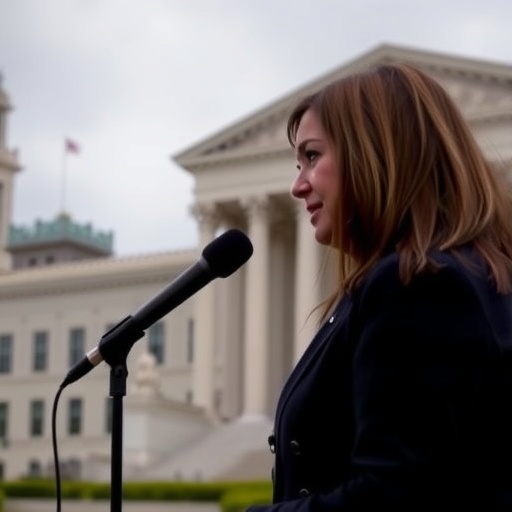Abortion Rights on the Line: Conservatives Target Pennsylvania Supreme Court Flip to Reshape Reproductive Access
In the battleground state of Pennsylvania, Abortion access is emerging as the defining issue of the 2023 Supreme Court elections, where conservatives are mounting an aggressive campaign to flip the court’s ideological balance. With three seats up for grabs—including the pivotal spot held by retiring Justice Christine Donohue—Republicans see a rare opportunity to secure a majority, potentially upending decades of protections for reproductive rights. Democrats and health advocates warn that such a shift could dismantle safeguards against restrictive laws, thrusting the Keystone State into the national spotlight just months after the U.S. Supreme Court’s Dobbs decision overturned Roe v. Wade.
The stakes couldn’t be higher: Pennsylvania’s Supreme Court currently holds a 5-2 Democratic majority, a bulwark against conservative-leaning legislation on issues like Abortion access. But with Governor Josh Shapiro, a Democrat, facing a divided legislature, the court’s role in interpreting state laws could become the last line of defense for women’s healthcare. Recent polls from the Public Policy Polling firm show that 58% of Pennsylvania voters view reproductive rights as a top priority, fueling a surge in voter registration drives and ad spending that has already topped $10 million from both sides.
“This election isn’t just about judges; it’s about whether Pennsylvania women will retain control over their bodies,” said Dr. Emily Chen, president of the Pennsylvania chapter of Planned Parenthood, in a recent interview. Her words echo the urgency felt across the state, where clinics have reported a 20% increase in out-of-state patients seeking services since 2022.
Conservatives Mobilize with High-Stakes Endorsements and Funding
Conservative groups are pouring resources into the Pennsylvania Supreme Court races, viewing a flip as a strategic win in the post-Dobbs era. The Republican State Leadership Committee (RSLC), a national powerhouse, has committed over $5 million to support GOP-backed candidates like Carolyn Carluccio for the Superior Court and Maria McLaughlin for the Commonwealth Court—races that indirectly influence the Supreme Court’s docket. But the crown jewel is the open seat in the Democratic stronghold of Western Pennsylvania, where conservative Patricia McCullough is challenging Democrat Erin Jackson.
Key to this push is the involvement of national figures. Former President Donald Trump, whose influence lingers in Pennsylvania’s GOP, has tweeted support for the conservative slate, calling it “a fight for life and family values.” Meanwhile, the Susan B. Anthony Pro-Life America PAC has launched a $2.3 million ad blitz targeting urban voters in Philadelphia and Pittsburgh, framing the election as a referendum on “extreme abortion agendas.” These ads highlight Pennsylvania’s current law, which allows abortions up to 24 weeks with exceptions, and warn of Democratic overreach.
Statistics underscore the conservatives’ momentum: Voter turnout in off-year judicial elections is typically low, around 30%, but early data from the Pennsylvania Department of State shows a 15% uptick in absentee ballot requests in conservative-leaning counties like Lancaster and Butler. “We’re seeing unprecedented grassroots energy,” noted RSLC spokesperson Jenny Beth Martin. “Pennsylvanians are ready to send a message that reproductive rights shouldn’t trump the rights of the unborn.”
Yet, this mobilization isn’t without controversy. Critics point to dark money flows, with over 40% of conservative funding coming from out-of-state donors, including ties to national anti-abortion networks. A report from the Brennan Center for Justice revealed that undisclosed contributions have surged 300% since 2020, raising questions about transparency in these pivotal races.
Democrats and Advocates Counter with Voter Mobilization Drives
Responding to the conservative surge, Democrats are leveraging their ground game to protect the court’s progressive tilt, emphasizing the direct link between judicial control and Abortion access. The Democratic Party of Pennsylvania has rolled out a $7 million campaign, including door-to-door canvassing in swing districts and digital ads featuring personal stories from women affected by restrictive laws in neighboring states like Ohio and Texas.
Governor Shapiro has been a vocal champion, hosting town halls in Harrisburg and Erie where he stressed, “The Supreme Court isn’t some distant body—it’s the guardian of our state constitution, which explicitly protects privacy and equality, including reproductive rights.” His administration recently expanded funding for family planning services by $15 million, a move hailed by advocates but decried by conservatives as political pandering.
Health organizations are amplifying these efforts. The ACLU of Pennsylvania has filed amicus briefs in ongoing cases challenging gestational limits on abortions, citing a 2023 study from the Guttmacher Institute that shows 1 in 4 Pennsylvania women of reproductive age live in “maternity care deserts,” exacerbating access issues. Planned Parenthood’s mobile clinics have increased visits by 25% in rural areas, providing education on how a conservative court flip could invalidate these services.
- Key Strategies: Targeted outreach to young voters (18-29), who polls show support abortion access by a 2-to-1 margin.
- Endorsements: High-profile backing from figures like U.S. Senator Bob Casey, who warned in a recent op-ed, “A conservative majority would greenlight bans that devastate families.”
- Legal Precedents: Highlighting the court’s 2019 ruling striking down clinic regulations as unconstitutional burdens on reproductive rights.
These initiatives have boosted early voting enthusiasm, with over 100,000 new registrations from women since Labor Day, according to state records. However, challenges persist: Judicial races often fly under the radar, and conservative super PACs are outspending Democrats 3-to-1 in rural media markets.
Potential Ripple Effects on Pennsylvania’s Abortion Landscape
If conservatives succeed in flipping the Pennsylvania Supreme Court, the implications for abortion access could be profound, reshaping not just healthcare but the state’s political fault lines. Legal experts predict a conservative majority—potentially 4-3—would revisit cases like the 2020 decision upholding Medicaid funding for abortions in cases of rape, incest, or life endangerment. “This court could become a rubber stamp for legislative overreach,” said University of Pittsburgh law professor Rachel Lopez in an analysis published by the Pennsylvania Bar Association.
Current data paints a stark picture: Before Dobbs, Pennsylvania performed about 32,000 abortions annually, per CDC figures, with 60% in Philadelphia alone. Post-Dobbs, interstate travel has spiked, costing the state economy an estimated $100 million in lost healthcare revenue. A flipped court might uphold bills like House Bill 1839, which seeks a 15-week ban, or expand “trigger laws” dormant since 2011.
Broader context includes Pennsylvania’s unique position as a swing state. With its 19 electoral votes, judicial outcomes here could foreshadow national trends, especially with 2024 looming. Economists from the Turnaway Study, a longitudinal project tracking abortion seekers, report that denied access leads to a 4% drop in annual earnings for women, hitting Pennsylvania’s working-class families hardest—particularly in steel towns like Bethlehem and manufacturing hubs in the southwest.
Advocates like the National Women’s Law Center are sounding alarms: “Pennsylvania isn’t Texas yet, but a conservative court flip brings us closer to the edge.” Their 2023 report details how similar shifts in Michigan and Wisconsin preserved rights through voter-approved amendments, urging Pennsylvanians to act.
- Short-Term Risks: Immediate challenges to clinic buffer zones and parental consent laws.
- Long-Term Shifts: Erosion of state equal rights amendments protecting bodily autonomy.
- Socioeconomic Impact: Disproportionate effects on Black and low-income communities, where abortion access rates are already 25% lower.
Conversely, maintaining the Democratic majority would likely reinforce precedents, such as the 2011 ruling affirming a woman’s right to privacy under the state constitution—a decision conservatives have long sought to overturn.
Election Day Looms: Strategies and Predictions Shape the Narrative
As November 7 approaches, both sides are fine-tuning strategies to sway undecided voters, with reproductive rights dominating airwaves and social media. Conservatives are focusing on suburban women in Montgomery and Delaware counties, using micro-targeted Facebook ads that emphasize “common-sense limits” on late-term procedures—ads viewed over 5 million times, per AdImpact tracking.
Democrats, meanwhile, are capitalizing on urban turnout, partnering with celebrities like actress Alyssa Milano for virtual rallies that have drawn 50,000 participants. A joint effort with labor unions has distributed 200,000 flyers linking court control to workplace protections for pregnant workers.
Polling aggregates from FiveThirtyEight give Democrats a slim 52-48 edge in retaining the majority, but margins are razor-thin in the open seat race. Political analyst Larry Sabato from the University of Virginia predicts, “Turnout will decide it—if progressives mobilize like in 2022 midterms, Pennsylvania‘s court stays blue; otherwise, it’s game on for conservatives.”
Looking ahead, the outcome will ripple beyond 2023. A conservative flip could embolden similar efforts in battlegrounds like Wisconsin and Nevada, while a Democratic hold might inspire ballot initiatives codifying abortion access. Health policy experts at Johns Hopkins University forecast that national trends, including potential federal protections under a future administration, will intersect with state battles, making Pennsylvania’s race a bellwether for America’s divided soul on reproductive rights. As clinics brace for uncertainty and voters head to the polls, one thing is clear: The future of bodily autonomy in the Keystone State hangs in the balance.









